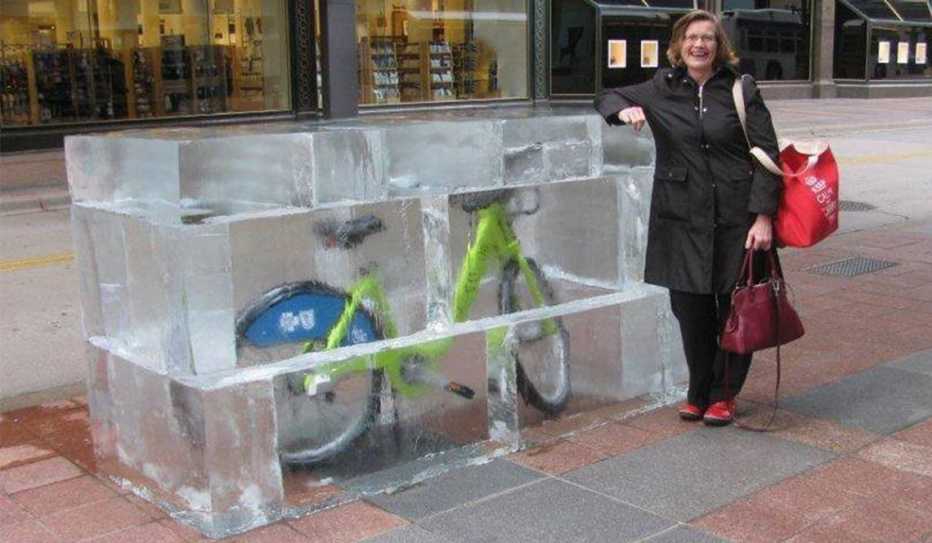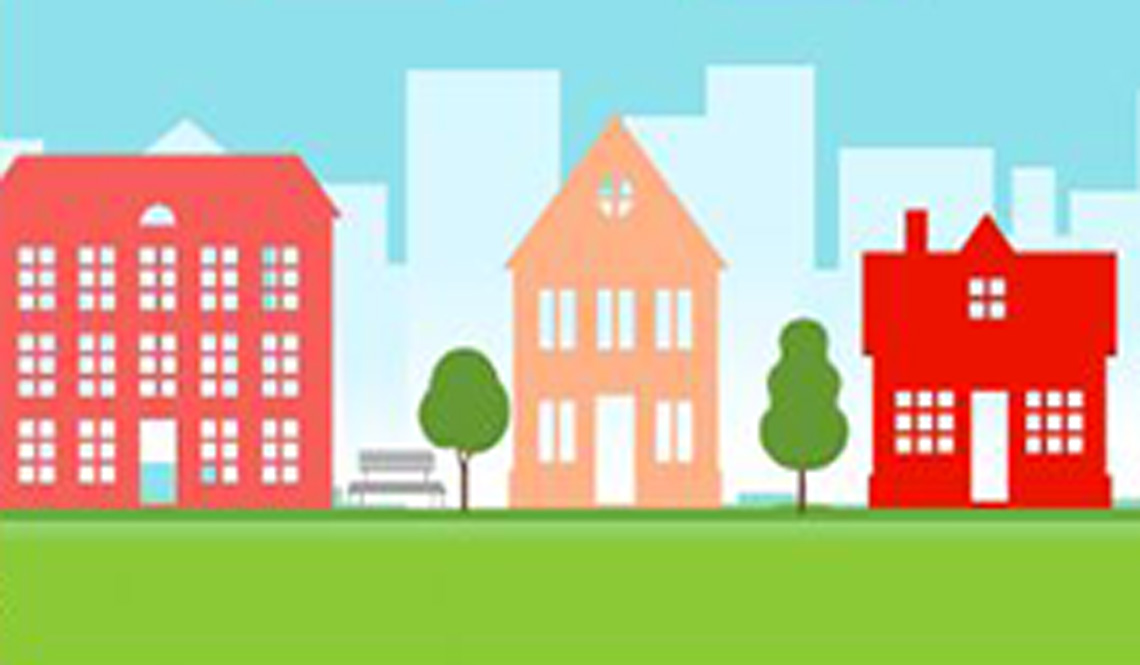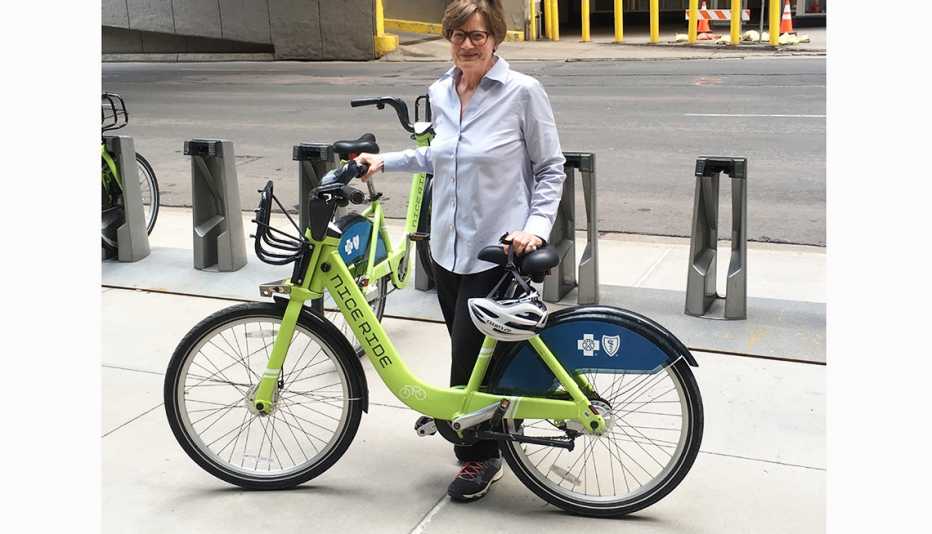AARP Hearing Center


"One day a line of bikes appeared on the sidewalk near my home, and that changed my life," recalls Phyllis Roden (pictured), an administrative assistant at a Minneapolis law firm. That's when Roden, who is in her 60s, became a regular user of Minneapolis-St. Paul's Nice Ride bike-share system, which allows anyone to rent a bicycle with the swipe of a credit card. Roden can easily ride hop from a bike near her home, work or shopping areas and then return the bicycle at any of 200 stations in the city.
Even though she owns her own bicycle, Roden finds that bike-share encourages her to ride more often. "I like the flexibility," she explains. "I can ride to a restaurant or grocery store and then if I eat a big dinner or buy a lot of groceries, just take the bus home."
These days she's less concerned about eating too much, having lost 10 pounds the first year after discovering bike-share. "Biking is so good for physical and mental health. I can de-stress on my way home from the office."
Tapping into Nice Ride's database use, Roden discovered that she's taken nearly 2,000 trips around town over the past seven years covering more than 4,000 miles in over 550 hours. That's a pretty good return on investment for her $75 annual membership fee (of which her employer pays $40). But anyone can buy a $6 day pass at Nice Ride stations to immediately gain access to a bicycle. All trips under 30 minutes are free. For longer trips, riders can return the bike to a station and rent it again, or pay a $3 fee for every additional half-hour.
Halfway across the country, Ginger Holton, also 60-something, a retired financial product manager in Manhattan, tells much the same story. "I couldn’t believe the flexibility it added to my life. All the things I do, Citi Bike takes me," she says.
Besides volunteering with the American Society for the Prevention of Cruelty to Animals and the Central Park Conservancy, Holton is part of Citi Bike's Bike Angel program, which means she rides and transfers bicycles from stations where demand is low during certain times of the day to ones where the bikes are most needed.
New York City traffic doesn’t intimidate her because, she says, "I've learned where to ride. Fifth Avenue is scary. So I go on the quiet side streets or the bike paths along the river, or on the protected bike lanes on busy streets." (On certain city streets bicyclists and motorists are physically separated from one another.)
The Advantages of Bike-Sharing
Many bike-share users are not typical bicyclists. Some don't own a bike and even those who do find bike-shares handy for certain trips — someone who commutes by car or transit, for instance, appreciates a bike for riding to lunch, errands or nearby meetings. Many train and bus commuters use bike-shares for the "last mile" ride to and from their home or workplace.
































































